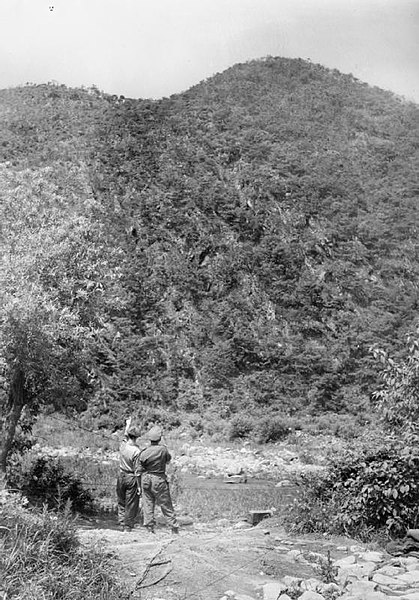The Ordnance ML 4.2-inch mortar was a heavy mortar used by the British Army during and after World War II.
Ordnance ML 4.2-inch mortar on mobile base plate
Image: The British Army in North west Europe 1944 45 B10448
Image: The British Army in Sicily 1943 NA5666
Image: The British Army in Burma 1945 SE4463
Battle of the Imjin River
The Battle of the Imjin River, also known as the Battle of Solma-ri or Battle of Gloster Hill in South Korea, or as Battle of Xuemali in China, took place 22–25 April 1951 during the Korean War. Troops from the Chinese People's Volunteer Army (PVA) attacked United Nations Command (UN) positions on the lower Imjin River in an attempt to achieve a breakthrough and recapture the South Korean capital Seoul. The attack was part of the Chinese Spring Offensive, the aim of which was to regain the initiative on the battlefield after a series of successful UN counter-offensives in January–March 1951 had allowed UN forces to establish themselves beyond the 38th Parallel at the Kansas Line.
Centurion tanks of the 8th Hussars disabled during the retreat of 29th Brigade on 25 April
The deployment of UN forces during the initial stages of the Spring Offensive. Note the importance of 29th Brigade's position for stopping a direct advance on Seoul.
Chinese Spring Offensive, April 1951
Gloster Hill five weeks after the battle








